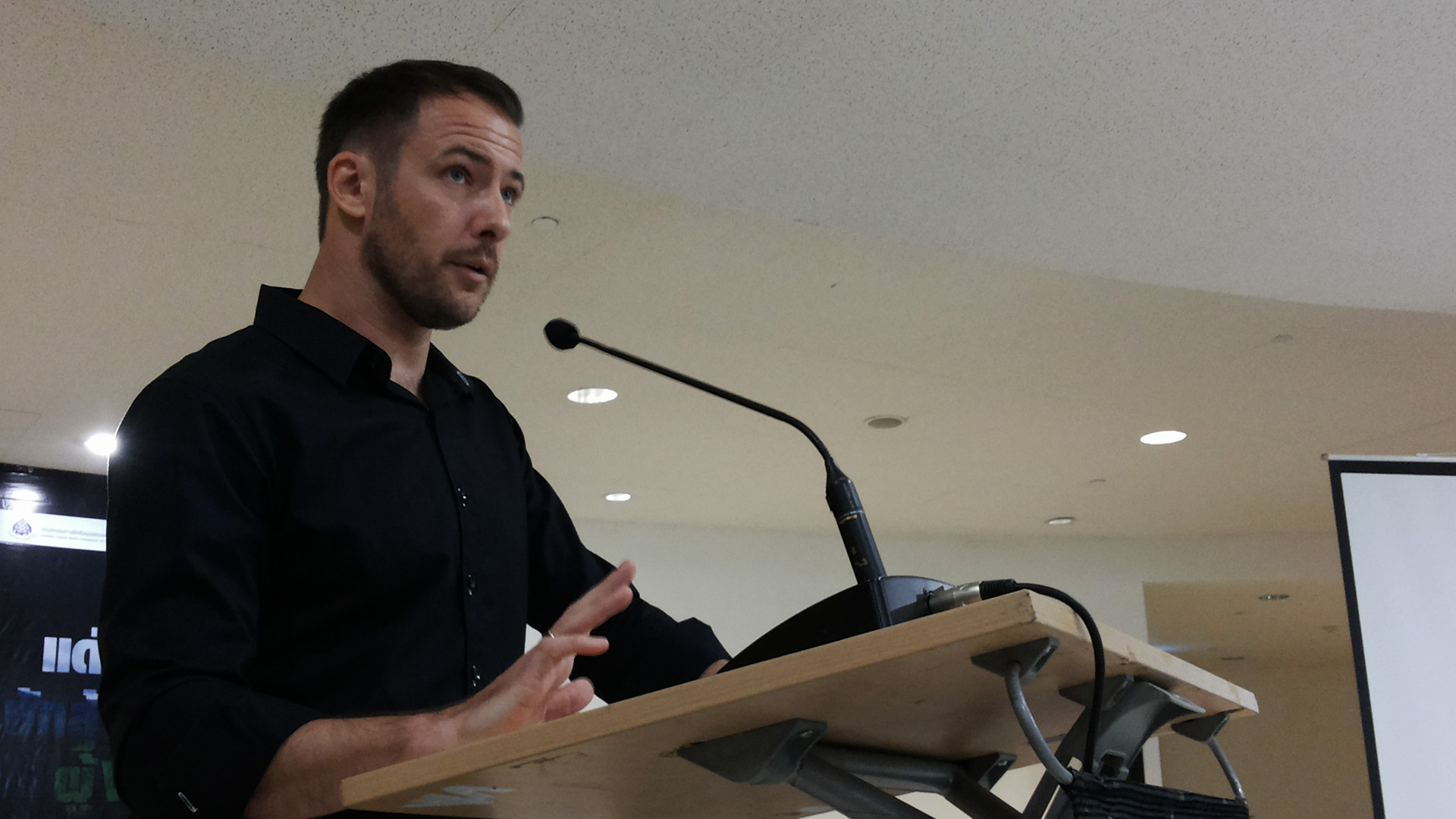A photographer has travelled across Thailand to document suppressed stories of enforced disappearances and the country’s culture of impunity. Since 1993, over 50 rights defenders have been either murdered or disappeared at the hands of the authorities.

The Thai authorities are notorious for violence against local dissidents. Those who stand up against state policies often end up in jail or, in the worst cases, are murdered by the authorities themselves. Very few state officials have been prosecuted for their crimes against dissidents.
A photo exhibition “For Those Who Died Trying” to honour the lives of community rights martyrs, and what they died for shows images of dead and missing rights defenders at the last location they were seen.
At the exhibition’s opening ceremony, the photographer behind the exhibition, Luke Duggleby, said that he started the project in 2014 after Jintana Kaewkao, an environmental activist, recounted to him the life-threatening intimidation she has experienced throughout her fight to protect her community.
Duggleby was inspired by a Thai cultural tradition where families place a photo of the deceased in a corner of their homes, as if maintaining their presence. Duggleby immortalises the activists at crime scenes instead. The New York Times has praised the exhibition as “a surprisingly moving set of photographs.”

Luke Duggleby
The photographer began his project by researching the assassinations of local activists across the country. After collating 20 cases by himself, the organisation Protection International assisted Duggleby to obtain a total of 37 photos to represent a majority of the 59 cases in their database of state-enforced murder or enforced disappearance.
For Angkhana Neelapaijit, a National Human Rights Commissioner, the exhibit resonated personally. She explained that her husband — the lawyer
Somchai Neelapaijit — is also a victim of an enforced disappearance, and that she has been fighting for justice for over a decade. Her case proves that justice does not exist in the Thai system.
Somchai was a lawyer representing ethnic Muslim Malay suspects in the Deep South of Thailand when he was abducted in Bangkok in 2004 and disappeared.
“After 13 years of fighting for justice, in late 2015 the Supreme Court dismissed the charges against the five police officers [accused of abducting Somchai]. Even worse, the court ruled that Somchai’s family members cannot act as plaintiffs in the case. There’s insufficient evidence to show that Somchai is dead or injured to the point where he cannot file the charge himself,” said Angkhana.
Angkhana emphasised that many others related to the lawsuit have also disappeared or been murdered during the fight for justice.
“Many people don’t know that in Somchai’s case, one of the suspected police officers disappeared during the appeal. Somchai’s client who witnessed the torture was also disappeared. His wife was shot to death, leaving their two children to be raised by their grandmother. Another two suspects were beaten and tortured and the police accused them of intentionally reporting false information. The two now have also been disappeared,” added Angkhana.
Natthakan Nao-opas, a villager from Chachoengsao Province, agreed that Thailand’s judicial system is ill-equipped to manage the country’s culture of impunity. Corruption allows officials to obstruct the rule of law.
Her husband, Prajob Nao-opas, was shot dead for opposing local toxic waste dumps. Two military officers hired by a government official were charged with the murder.
The Court of First Instance judged the three to be guilty, sentencing the official to death and the two soldiers to life imprisonment. However, the Court of Appeal annulled the verdict and dismissed all charges against the official. The court reasoned that although phone records show that the official contacted the two soldiers on the days before and after the assassination, no evidence proves that he hired the soldiers for the assassination.

Prajop was shot four times and killed in February 2013.
The exhibition will be on display at the Bangkok Art & Cultural Centre between 31 January and 5 February. It was coordinated jointly by Protection International, the National Human Rights Commission, Thai Volunteer Service and the Embassy of Canada to Thailand.








